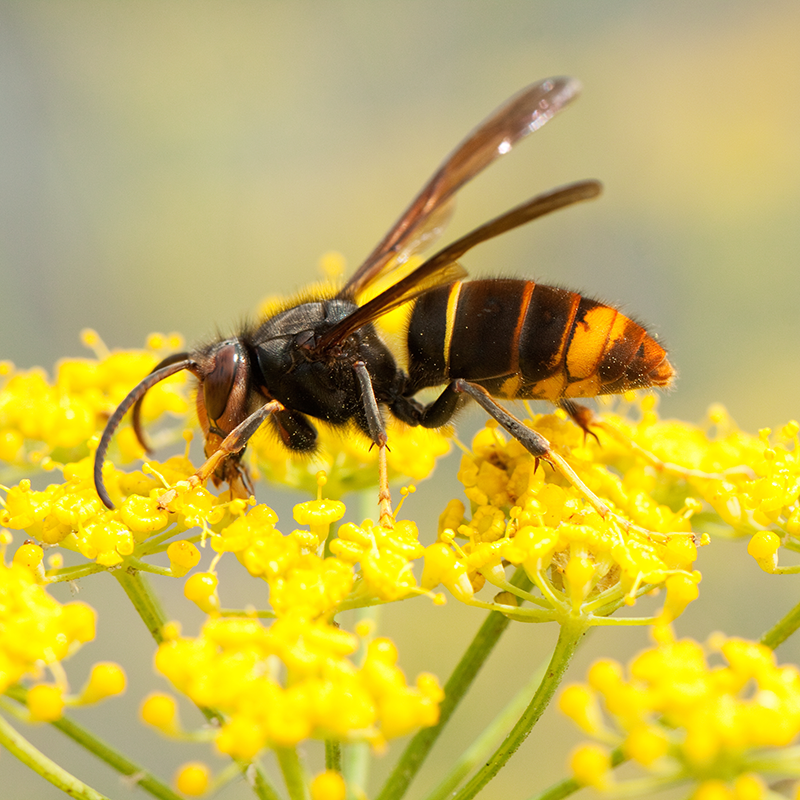AI guards against invasive hornets
Insect diversity and abundance are in decline in the UK and threatened further by invasive species. Invasive species colonise areas they are not native to, disrupting the usual ecosystem balance. This can decimate other species, including those that carry out important roles like pollination.
The invasive yellow-legged hornet (also sometimes known as the Asian hornet), Vespa velutina, was first sighted in France in 2004. Twenty years on, the species has made approximately 500,000 nests there, predating on native insects and putting pollination, as well as the honey industry, at risk. Whole honeybee hives can be lost.
In 2016, the first yellow-legged hornet was sighted in the UK. To control the invasion, detection of Vespa velutina is key but currently relies on public records. Only 0.01% of those sightings are correctly identified.
Professor Juliet Osborne at the University of Exeter is leading a team of researchers to develop a Vespa velutina detection system called VespAI. VespAI uses a camera, paired with an AI-based image recognition method, to identify the hornet as it visits a baited monitoring station. Once detected, the system sends an alert to users, enabling control measures to be taken.
In 2024, VespAI was tested on the island of Jersey, where Vespa velutina visited regularly, and also in Kent and Hampshire, where sightings are rare. VespAI proved to be highly accurate, distinguishing Vespa velutina from other insects with over 99% accuracy. The technology (which monitors insects continuously) offers a promising means of detecting the species at the frontline of the invasion, supporting the government’s actions to tackle this invasive species.
This research was supported by BBSRC responsive mode and Follow-on Fund funding.
Vespa velutina are attracted to the VespAI bait station where they are then detected using AI-based image recognition Credit Professor Juliet Osborne
Vespa velutina are attracted to the VespAI bait station where they are then detected using AI-based image recognition Credit Professor Juliet Osborne
About BBSRC
As the UK’s major public funder of world-leading bioscience research and innovation, the Biotechnology and Biological Sciences Research Council's (BBSRC) vision is to advance the frontiers of biology and drive towards a healthy, prosperous and sustainable future.
Some of the institutions key to meeting this vision are BBSRC’s strategic partnerships with universities, of which there are 15. Also mission critical are the 8 specialist bioscience research institutes that BBSRC strategically funds:
- Babraham Institute
- Earlham Institute
- Institute of Biological, Environmental and Rural Sciences (IBERS)
- John Innes Centre
- The Pirbright Institute
- Quadram Institute
- The Roslin Institute
- Rothamsted Research
Find out more about BBSRC’s work and strategic priorities by reading our Strategic Delivery Plan 2022-2025.
Contact us
Impact narratives and case studies provide an important evidence base to support the case for continued investment in world-class bioscience.
Get in touch with us to discuss BBSRC’s research outcomes and impacts or to tell us about your own:
Emma Lambourne, Senior Manager, Impact Evidence
emma.lambourne@bbsrc.ukri.org
Rosie Ford, Manager, Impact Evidence
rosie.ford@bbsrc.ukri.org
Dr Beverley Thomas, Associate Director, Evidence and Evaluation
beverley.thomas@bbsrc.ukri.org
Biotechnology and Biological Sciences Research Council
UK Research and Innovation, Polaris House, Swindon, SN2 1FL


